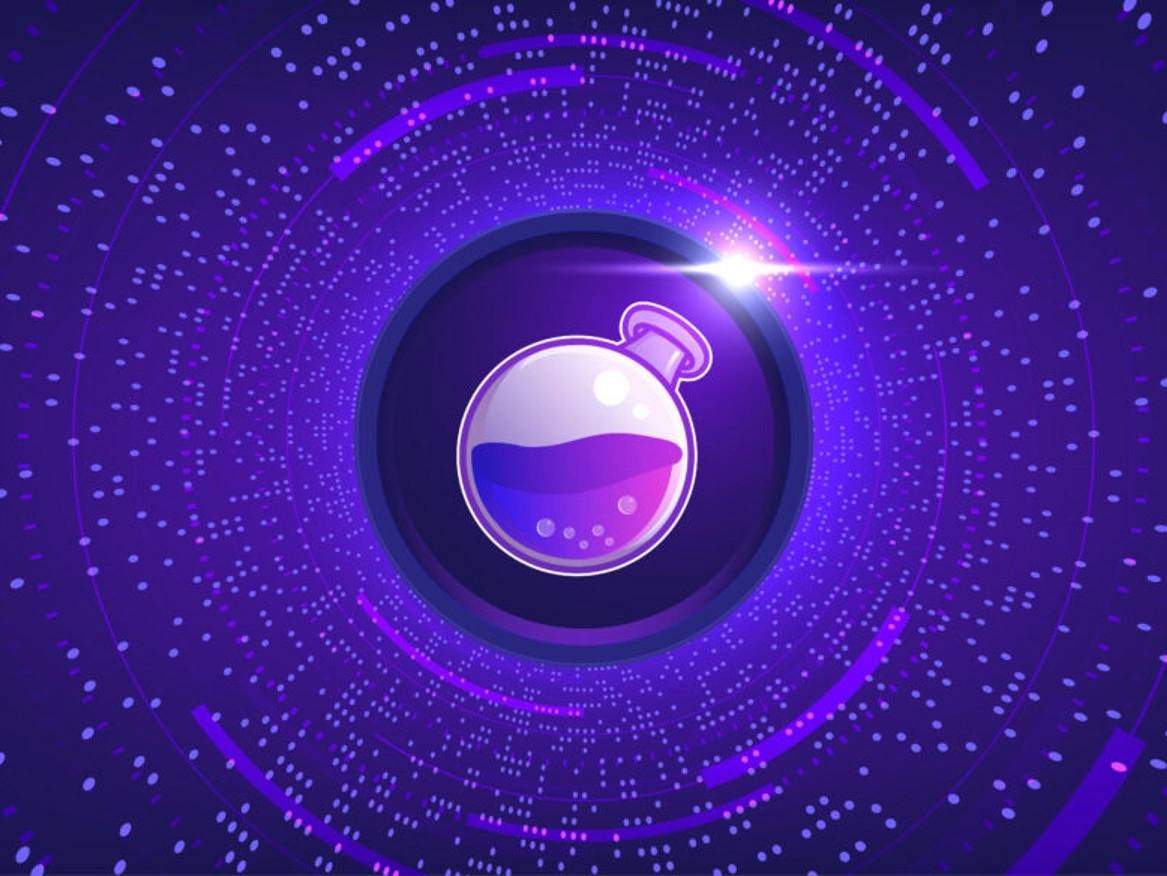订阅 wiki
Share wiki
Bookmark
Osmosis (OSMO)
Osmosis (OSMO)
Osmosis (OSMO) 是一个为 Cosmos 生态系统设计的去中心化交易所 (DEX) 和 自动化做市商 (AMM) 协议。[1] Osmosis 是一个为 Cosmos 生态系统构建的多链 AMM。它使用区块链间通信协议 (IBC) 和 Axelar 提供 区块链 之间的互操作性。Osmosis 由 OSMO 代币驱动。[7]
历史
Osmosis是由Osmosis Labs使用Cosmos SDK创建的AMM协议。该项目于2020年10月宣布,并于2021年6月19日启动。其开发由Sunny Aggarwal、Josh Lee和Dev Ojha领导。Osmosis在2021年10月的代币销售中筹集了2100万美元,由Paradigm领投。[6]
Osmosis Labs Pte. Ltd.(“Osmosis Labs”)负责Osmosis协议的大部分初始代码开发,Osmosis项目由一个去中心化的验证器集合运行。协议的每一次升级和修改都由Osmosis社区(OSMO治理代币的持有者)投票并执行。[2]
概述
Osmosis 是一个 AMM 协议,用于链间资产,旨在允许开发和管理一个自平衡、非托管的链间代币指数。它是一个去中心化交易平台,用于在 Cosmos 网络上进行交换、赚取和构建。Osmosis 使用 智能合约 来确定数字资产的价格,通过 点对点 (P2P) 方法产生流动性,并在用户之间进行交易。它提供分析资产和流动性、参与治理以及构建链间原生应用程序的工具。Osmosis 旨在提供可定制性,例如调整交换费用、自定义曲线 AMM 和多代币 流动性池。 [1][3]
Osmosis 还提供从 Ethereum 和 Polkadot 生态系统桥接的非 IBC 资产。作为 appchain DEX,Osmosis 比必须遵循父链代码的 DEX 具有对完整区块链堆栈的更大控制权。这种细粒度的控制使得 Superfluid Staking 的开发成为可能,这是对 Proof-of-Stake 安全性的一项改进。Superfluid 质押允许流动性池中底层 OSMO 增加链安全性并赚取质押奖励。Appchain 的可定制性还允许开发一个受 阈值加密 保护的交易 mempool,这将显着减少 Osmosis 上有害的 MEV。MEV,或矿工可提取价值,是指矿工可以通过重新排列、添加或省略区块中的交易来获得的总潜在价值。[4][5][12]
架构
Osmosis是一个自动做市商(AMM)协议,旨在促进创建具有独立流动性池的定制AMM。Osmosis基于Cosmos SDK开发,采用区块链间通信(IBC)来促进跨链交易。 [13]
自动化做市商 (AMM)
自动化做市商 (AMM) 是去中心化金融协议,无需依赖中央中介即可促进资产交换。智能合约取代了传统的交易台和订单簿来执行交易。流动性池由用户将资产存入其中创建,从而实现交易。这些用户,被称为流动性提供者 (LP),可以以无需许可的方式为任何资产创建池。在 Osmosis 中,池创建者可以灵活地自定义交易费用和退出费用,流动性提供者在从池中提取资产时需要支付这些费用。 [14]
代币权重
流动性池是具有预定权重的代币集合,其中每个代币的权重表示其在池中总价值的比例。例如,Uniswap 池通常有两个代币,权重相等,均为 50-50,以确保资产总价值之间的对等。但是,其他权重分配(例如 90-10)也是可能的,并且流动性池可能包含两个以上的资产。 [15]
在 Osmosis 中,池创建者可以自由选择池中的代币及其相应的权重。一旦确定,这些参数将无法更改。但是,其他用户仍然可以创建具有不同配置的单独池。 [15]
定价
固定代币权重使自动化做市商 (AMM) 能够建立确定性的定价。在流动性池中,代币保持其权重,代表它们彼此之间的价值,即使池中代币的数量波动。因此,价格会进行调整,以确保代币之间的相对价值保持一致。 [16]
做市商功能
AMM使用数学公式来确定池内的资产定价。恒定函数确保交易规则保持一致,无论交易规模或交易的资产如何。最常见的类型是恒定乘积做市商,但也使用其他函数。 [17]
LP 代币
当用户将资产存入流动性池时,他们会收到 LP 代币,这些代币代表他们在池中的所有权。例如,如果用户将 OSMO 和 ATOM 代币存入池 #1,他们会收到 Pool1 份额代币作为回报。这些份额代币表明用户对池的比例所有权。 [18]
当用户从池中提取流动性时,他们会收到相当于其 LP 代币的总流动性的百分比。但是,由于池内买卖导致资产数量变化,用户不太可能取回与最初存入的每种代币数量相同。通常,他们会收到更多的一种代币和更少的一种代币,具体取决于池内进行的交易。 [18]
流动性挖矿
流动性挖矿,也称为收益耕作,涉及用户通过向 DeFi 协议提供流动性来赚取代币。这种机制有助于抵消 LP 经历的无常损失,并提供交易费用之外的额外激励。流动性挖矿奖励对于新协议尤其有价值,因为它们可以引导初始流动性,鼓励更多使用,并为 LP 产生更多费用。 [19]
无常损失
流动性提供者通过费用和特殊池奖励获得收入。然而,他们也面临无常损失的风险,即他们可能持有资产而不是提供资产会更好。无常损失是指持有资产和提供流动性之间的净值差异。流动性挖矿计划旨在抵消流动性提供者的无常损失。 [20]
当池内资产价格以不同的速度变化时,流动性提供者最终可能持有更多价格涨幅较小(或价格跌幅较大)的资产。例如,在 OSMO-ATOM 池中,如果 OSMO 的价格相对于 ATOM 显着上涨,流动性提供者最终可能持有更多价值较低的资产 (ATOM)。 [20]
长期流动性
流动性挖矿奖励可能会吸引短期参与者,即“雇佣兵农民”,他们迅速存入和提取流动性以最大化收益。这些参与者主要对治理代币的投机价值感兴趣,并且经常在协议之间切换以追逐最高的收益率。 [21]
虽然雇佣兵农民最初可能会提高协议活动,但他们的离开可能会导致流动性发生重大波动,由于滑点,这给用户执行交易带来了挑战。因此,维持长期流动性对于自动化做市商 (AMM) 的成功至关重要。 [21]
Osmosis 结合了退出费用和绑定流动性计量器两种机制来鼓励长期流动性。 [21]
区块链间通信协议 (IBC)
区块链间通信协议 (IBC) 通过定义一组可由满足特定标准的任何分布式账本实现的结构,促进独立区块链之间的通信。 [22]
IBC 支持各种跨链应用,例如代币转移、交换、多链合约和数据分片。最初,Osmosis 主要利用 IBC 进行代币转移。但是,Osmosis 计划随着 IBC 的发展整合更多功能。 [22]
OSMO 代币
OSMO 是 Osmosis 网络的本地代币。OSMO 代币是一种治理代币,允许质押代币的持有者决定协议的未来。OSMO 主要用于投票决定协议升级、设置基础网络的交换费用以及分配挖矿奖励给流动性池。[1]
OSMO 代币持有者治理旨在选择有资格获得奖励的流动性池,允许利益相关者制定有利于协议长期利益的激励策略。Osmosis 还旨在允许第三方为某些流动性池添加激励机制。[5][7]
OSMO 代币的最大数量已设定为 10 亿。OSMO 还寻求在现有钱包集成、订单流、IBC 连接和 Osmosis 生态系统中的流动性的帮助下,用于部署新曲线。[6]
代币经济学
OSMO是该协议的治理代币,总供应量设定为10亿。在创世之初,最初分配了1亿个OSMO代币,在空投接收者和战略储备之间平均分配。代币发行在每个每日纪元结束时进行,遵循“三分之一”的时间表,该时间表涉及每年减少三次代币发行。第一年发行了3亿个OSMO代币,第二年发行了2亿个,第三年发行了1.33亿个,依此类推。 [8]
新发行代币的分配如下:
- 质押奖励:25% - 开发者归属:25% - 流动性挖矿激励:45% - 社区池:5%
总体代币分配如下:
- 流动性奖励挖矿:40.5% - 开发者归属:22.5% - 质押奖励:22.5% - 社区池:4.5% - 战略储备:5% - 空投:5%
用例
OSMO代币的用例如下:[9]
- 投票:活跃的网络利益相关者提出、评估和批准协议升级。OSMO治理参与者目前选择有资格获得流动性奖励的池子,使利益相关者能够制定符合协议长期利益的激励策略。
- 交易费用:用户必须支付在链上发布交易的交易费用,费用金额由交易的计算和存储成本决定。最低gas成本由包含交易的区块的提议者设定。收取的交易费用分配给网络上的OSMO质押者。验证者可以自行决定接受哪些资产作为他们提议的区块中的费用,所有接受的资产在分配前都会转换为OSMO。
- ProtoRev:ProtoRev模块铸造和销毁OSMO代币,以促进链上套利交易,确保链内流动性来源之间的价格平衡。
- Taker费用:Osmosis对所有交易收取少量taker费用,最初设定为0.1%。协议费用控制器子DAO管理特定路线的减少或豁免。Taker费用以交易的报价资产收取。收取的OSMO分配给质押者,而非OSMO费用则进行分配,33%分配给社区池,剩余67%在分配给质押者之前转换为OSMO。
- Superfluid Staking:Superfluid Staking通过类似“有用权益证明”的机制为共识层安全做出贡献。参与者根据其在流动性池代币中的质押价值获得OSMO,这些代币既被质押又被委托给验证者。这种连接将共识层的安全性与GAMM LP份额对齐。Superfluid Staking适用于配对中包含OSMO并通过治理决策激活此功能的池子。
Osmocon
Osmocon是由Osmosis主办的年度活动,展示演讲者、公告以及与Osmosis相关的各种活动。2023年版于7月21日在法国巴黎举行。演讲者包括Sunny Aggarwal、Josh Lee、Idris Olubisi、Dev Ohja、Paul Erlanger等。[10]
2022年版于6月9日在德克萨斯州奥斯汀举行。参与者包括Membrane Protocol和Andromeda Protocol,小组成员包括0xBrainJar、Composable Finance、Matt Bell、Nomic、Sergey Gorbunov等。[11]
发现错误了吗?
